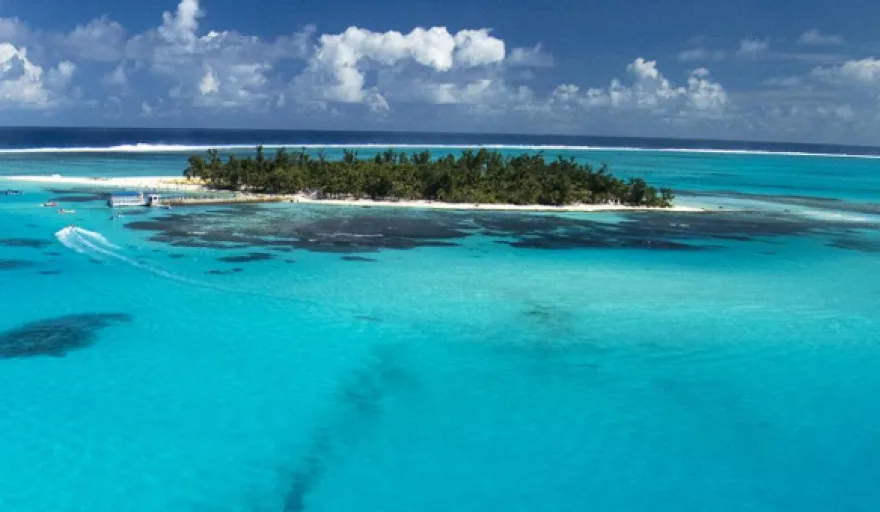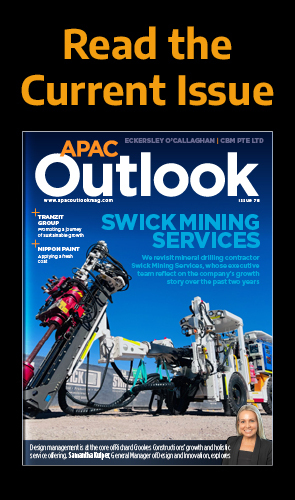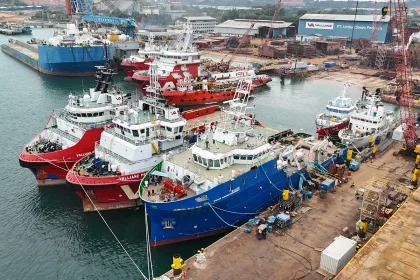Described as an easy warm-weather escape northeast of Guam by Visit The USA, the Northern Mariana Islands are a dazzling group of 15 landmasses in the Philippine Sea.
Now ran as US Commonwealth (with Donald Trump technically the destination’s Head of State), the Marianas are part of a chain of volcanic mountain peaks and uplifted coral reefs, making for spectacular scenery both above and below sea level.
Although there are 15 islands, only six are inhabited, the three major population centres being Saipan (the capital city), Tinian and Rota. The island of Pagan was inhabited until 1981, when a severe volcanic eruption forced the evacuation of its residents.
Besides Guam, the Northern Mariana Islands’ nearest neighbours are the Bonin Islands to the north and the Federated States of Micronesia to the south.
As well as picturesque scenery, pristine beaches and charming local hosts, consistent yearly temperatures ranging between 26 and 28 degrees Celsius make for a comfortable stay all year round, although the southern islands are prone to heavy rainfall.
Those interested in history will also not leave disappointed, with many preserved Second World War buildings and outposts in easy reach.
THE BUSINESS END
Around 90 percent of citizens live in urban areas, the remaining 10 percent living rurally relying primarily on subsistence farming to supplement their cash incomes. Taro, cassava, yams, breadfruit, vegetables and bananas are commonly grown.
Investors from South Korea, China and the Philippines have helped industrialise parts of the economy, including the garment-making sector which has now expanded to become a major revenue generator.
Tourism, however, is the principal economic activity. According to the latest statistics from the Marinas Visitors Authority, the 2018 financial year saw more than 607,000 arrivals, with South Koreans arriving in the biggest numbers (236,577).
Other important tourist arrivals came from Japan, China, Hong Kong, Guam, the US and Russia.
These figures actually represent a slight decrease on inbound tourists from 2017, although 2018 still marked the fifth busiest year in Marianas history, the record being 726,690 in 1997.
A major reason behind the slight drop was the cessation of direct flights to and from Japan in May 2018, a move which saw a 25 percent reduction in Japanese tourist arrivals. However, it is very much the objective of associations such as the Marianas Visitors Authority to revive these valuable routes.
Q&A WITH THE MARIANAS VISITORS AUTHORITY
The Marianas Visitors Authority was established in 1976, mandated to promote and develop the Northern Mariana Islands as a premier destination of choice for visitors from all over the world, at the same time providing a maximum quality of life for our people.
“We nurture and encourage cultural interchange and environmental sensitivity for visitors’ enjoyment and for the local community,” comments Priscilla Iakopo, the organisation’s Managing Director.
Here, Iakopo answers our questions on the developing tourism scene in the country and the future goals of the Marianas Visitors Authority.
Since inception, how has the Marianas Visitors Authority developed and progressed in terms of its key objectives and the messages it tries to get across?
Priscilla Iakopo (PI): One of the main objectives for the Marianas Visitors Authority is attracting high-yield segments from core target markets including but not limited to Korea, Japan, China, Taiwan, and Russia. Through effective marketing strategies, we have garnered great number of arrivals from these core target markets. Furthermore, we are putting effort into targeting other markets around the world to seek opportunity on expanding the awareness of the Marianas destination.
How would you say the Marianas has developed in recent years as a business travel hub and what are the key reasons behind its growing appeal?
PI: The Marianas has effectively executed on properly guiding and assisting travellers to the Marianas by working closely with source travel partners from emerging markets.
Why, in your opinion, should someone visit the Marianas?
PI: The Marianas is a perfect getaway destination with crystal clear waters, white sandy beaches, rich history, beautiful nature, and year-round warm weather for visitors to enjoy outdoor activities, world-class diving and golfing. There is also international shopping, a wide range of ethnic restaurants, and a wide variety of international and indigenous cultures. Best of all, the people in the Marianas are very hospitable and friendly.
Are there any specific attractions, landmarks or places to eat and drink that you would recommend?
PI: Marianas has great historical landmarks. There are WW2 historical sites around the islands as well as indigenous cultural historical sites such as the Latte Stone Quarry in Rota, and the Taga House in Tinian. The Latte Stone Quarry in Rota is in the record book as being the largest of its kind. The north part of the island of Saipan has iconic sites such as Banzai Cliff where there is a great WW2 historical presence and also Grotto that is an iconic dive site that features a unique underwater cave to dive into. In addition, the Marianas offers authentic local Chamorro foods such as Chicken Kelaguen which is a lemon-based chicken mix, and Apigigi which is similar to a rice cake but made with coconut. There are also different varieties of ethnic cuisines that can be easily found around the whole destination.
What are the best ways of getting around the islands?
PI: The best way of getting around the island is by car and tour buses offered by tour companies. Rent-a-car use has been rising in the past several years – it has been a trend taking iconic photos around the island driving convertible Mustangs and Camaros. The Commonwealth Office of Transit Authority also launched a fixed-route transit service in 2017. This service is also available to tourists.
What trends are transforming the tourism industry in the Marianas at present? How are you responding to these trends?
PI: The growing trend here in the Marianas is diving. We have been seeing increased numbers of divers visit. We also currently have an Ocean Ambassador that represents the Marianas, a famous Taiwanese celebrity by the name of Yorko Summer. Through projects with Summer, we have been able to further expose and promote diving in the Marianas to all markets with magnificent videos and astonishing photos of our Marianas dive sites.
How do you see the Marianas developing as a business travel hub over the next year to two years?
PI: We currently have six ongoing hotel projects here in the Marianas (five in Saipan and one in Tinian). Through this we will have more available hotel rooms that will give us a leverage into having increased numbers of visitors for the upcoming years once constructions are completed. This will also open doors to foreign investors to consider the Marianas as a prime destination to invest.
Are there any plans or projects in the pipeline that you wish to highlight?
PI: Reviving the Japanese market is one of our main objectives as it was once the top market in the Marianas. We are working closely with Japanese travel partners with a view to having direct flights between our two countries. In addition, the Marianas Visitors Authority is working on promoting ecotourism and sports tourism.
Are you optimistic about the future of the tourism industry in the Marianas?
PI: Very optimistic. With the growing numbers of foreign investors and interest from travellers around the world, we are confident about the future of the tourism industry in the Marianas. The Marianas Visitors Authority continues to work and adapt to the ever-changing travel trends.
SAIPAN IN FOCUS
Saipan is the administrative capital and largest island of the Marianas.
It was an important battleground in the Pacific campaign of the Second World War, where Allied forces overcame the defending Japanese forces between June and July 1944. It was an important victory, for it left the US within bombing range of the Japanese archipelago and lead to the resignation of the country’s Prime Minister, Hideki Tojo.
Banzai Cliff and Suicide Cliff are important memorial sites related to the battle, for it was here where thousands of Japanese civilians jumped to their deaths in desperate attempts to escape the fighting.
The Northern Mariana Islands have been administered by the US since the end of the conflict, becoming a US commonwealth in 1978.
Saipan itself is 23 kilometres long and eight kilometres wide, the most prime beaches found on the western and southern coastlines, with mountainous and rugged coastal stretches on the north and east sides.
Outdoor activities are a must for visitors to Saipan, the island offering tremendous diving opportunities as well as beautiful trekking trails to the likes of The Forbidden Island. There are also five golf courses, one designed by the well-known golfing figure Greg Norman.
TRANSPORT LINKS
Saipan International Airport is the major air transit hub of the Marianas.
Flying to cities in South Korea, China, Guam and the Philippines, as well as Hong Kong, several major airlines operate out of the airport, including Delta Air Lines, Asiana Airlines, United Airlines, China Eastern, Jeju Air, Sichuan Airlines, Jin Air and PAL Express.
From here visitors can also pick up a rental car, an increasingly popular mode of navigating the main island. Companies operating out of Saipan International Airport include Avis, Budget Rent A Car, Alamo, Islander Rent a Car, Microl and Hertz.
Tinian International Airport is a smaller operation, handling traffic from inter-island journeys from Saipan, Rota and Guam. Aircraft landing here are single engine, able to carry up to nine passengers at a time.
Benjamin Taisacan Manglona International Airport (Rota) is the third airport in the Northern Mariana Islands, again serving inter-island routes between Saipan and Guam. It can handle slightly larger aircraft than Tinian, the ATR 42 able to carry up to 30 passengers. Airlines operating here include Cape Air, Star Marianas and Arctic Circle.
Another way of navigating the islands is to join a bus tour.






































